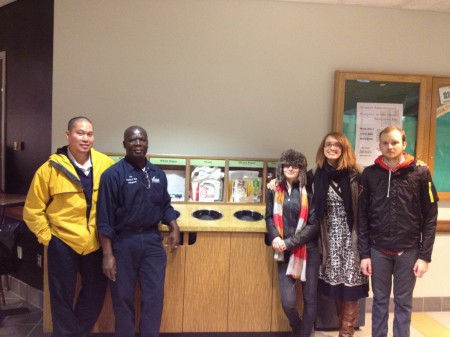Senior Dennis Savonarola is a popular guy.
“You do end up getting a lot of calls,” Savonarola said. “They say, ‘Oh, I’m having this computer problem. You’re IT, so you must know how to fix it.’”
As an information technology major, Savonarola may find that he is just as in-demand with employers as he is with his friends.
And he’s in good company. Information technology has become the most popular major on campus, according to George Mason University’s Office of Institutional Research and Reporting. With an increase in enrollment of 46.5 percent over the past five years, IT is one of the fastest growing degree programs at Mason. That doesn’t surprise Savonarola.
“I think a lot of people look at it as, ‘I’ll be able to get a job with this,’” Savonarola said. “There’s a bunch of things you can do with it. Pretty much everybody needs IT.”
It just displaced biology from the top spot. That program has grown by 17.5 percent over the past five years. The third-most sought-after degree, curriculum and instruction, is in the education department. Communication and government round out the top five.
On the other hand, the largest program in the art department, art and visual technology, is down by 40 percent from what it was in fall 2007. According to the National Bureau of Economic Research, the recession began in December of that same year. Theater majors are down 20.8 percent, philosophy 21.7 percent, and English 10.6 percent.
“Certainly in the recessionary times [students] are looking for ways to ensure that they will get a job when they graduate by choosing majors with a clear career path,” said Janette Muir, associate provost for undergraduate education.
So what are employers looking for? According to the National Association of Colleges and Employers, business, computer science and engineering. Unemployment is lowest among health-care and education degree-holders, according to Forbes. Post-graduation unemployment is highest among architecture majors, presumably because of a bust housing market.
One outlier is the School of Management. Although they are highly employable degrees, management is down 72.2 percent and marketing is down 62.2 percent. According to Alison O’Brien, associate dean of undergraduate programs within the School of Management, that’s because the requirements have been tightened for those programs.
“The perception is that we have higher standards in the School of Management. Is the curriculum rigorous? Absolutely,” O’Brien said. “But it’s preparing students for the rigors of the workforce.”
For those discouraged by the recent trend of college students being funneled into career-specific majors, some like Muir, still come to the defense of a well-rounded education. The skillsets that come from a liberal arts diploma are still highly valued.
“A lot of students don’t understand why they have to take the general education classes,” Muir said. “[But] More and more employers want to see strong critical thinking skills, the ability to work collaboratively in groups, [and] they’d like to see strong communication skills, both written and speaking.”
In an economy where unemployment is 22.9 percent among people with only a high school education — according to the National Bureau of Economic Research — a college diploma is more valuable than ever.
According to the Office of Institutional Research and Reporting website, the total enrollment at Mason is up 9.9 percent from five years ago. Jointly, enrollment for economics majors is up 38 percent since the beginning of the recession. Maybe it’s not a coincidence.
